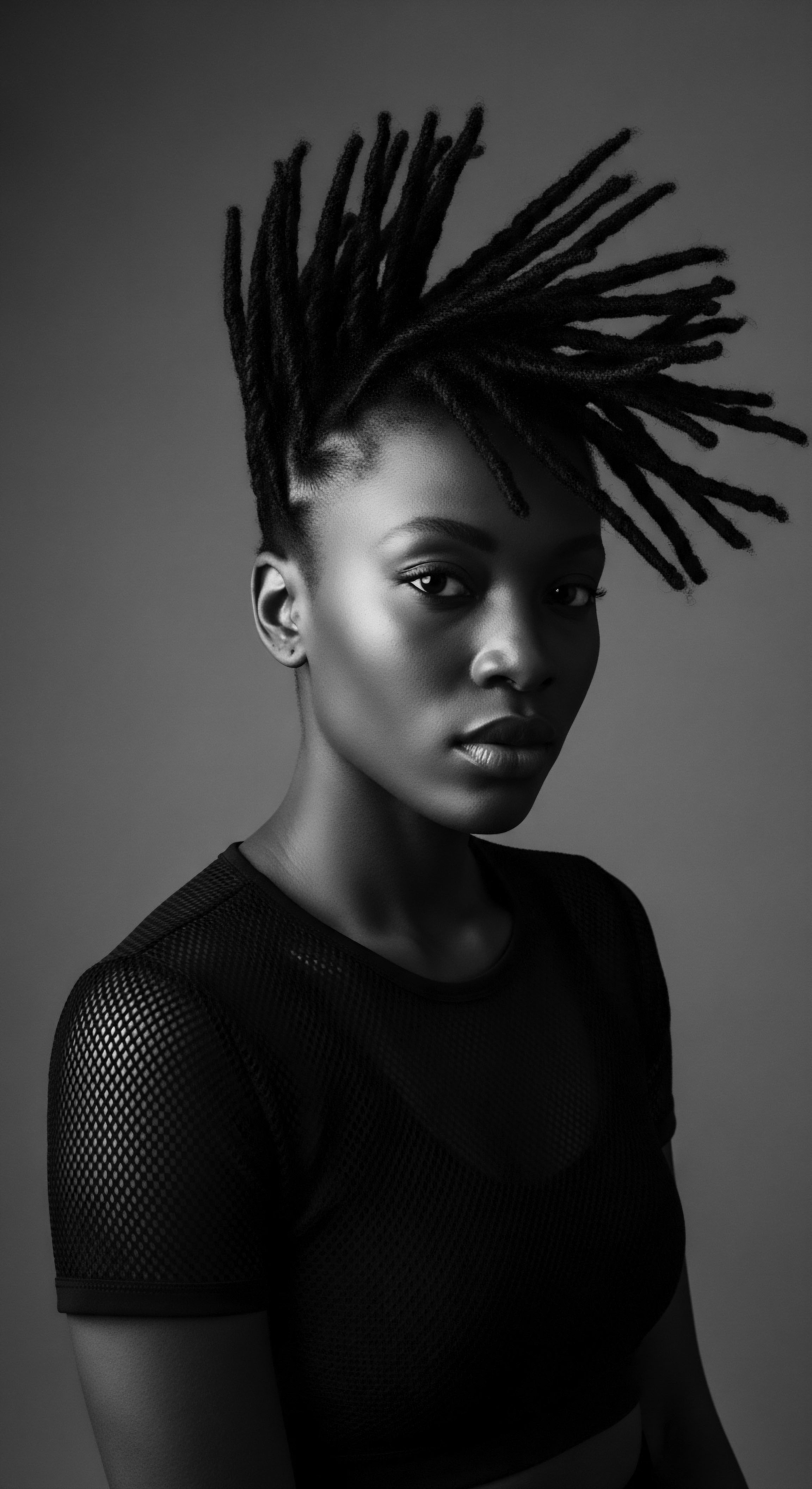
Fundamentals
The skin barrier, a truly remarkable shield, stands as the outermost defense of our bodies, a guardian against the world’s ceaseless ebb and flow. At its most fundamental, this protective layer, known scientifically as the Stratum Corneum, acts as a sophisticated, selectively permeable membrane. Imagine a well-built wall, not of stone and mortar, but of specialized skin cells, called corneocytes, tightly bound together by a rich, fatty matrix of lipids— ceramides, fatty acids, and cholesterol. This intricate construction serves a dual purpose ❉ it keeps essential moisture within the body, preventing dehydration, and simultaneously wards off environmental stressors, irritants, and harmful microorganisms from penetrating our delicate inner landscape.
For those with textured hair, particularly within Black and mixed-race communities, understanding the skin barrier’s basic meaning extends beyond mere biology. It becomes a foundational element in a legacy of hair care practices, deeply rooted in ancestral wisdom. The scalp, an extension of the skin barrier, plays a pivotal role in nurturing the hair strands that emerge from it. A healthy scalp, a well-maintained barrier, is the very soil from which resilient, vibrant textured hair grows.
Without this protective foundation, hair struggles to retain its natural moisture, becoming vulnerable to breakage and environmental damage. This connection to the scalp’s well-being has been understood intuitively for generations, long before scientific terms like “stratum corneum” graced our lexicon.
The skin barrier, our body’s outer shield, functions to retain vital moisture and protect against environmental harm.

The Scalp as a Sacred Ground
In many ancestral traditions, the scalp was not merely a patch of skin; it was considered a sacred ground, a connection point to spirit, to lineage, and to identity. This profound interpretation influenced care rituals, which often centered on nourishing and protecting this vital area. Think of the meticulous oiling practices passed down through West African lineages, where ingredients like Shea Butter, extracted from the nuts of the shea tree, were massaged into the scalp. This was not just about softening hair; it was an act of reverence, believed to seal the crown and protect the spirit.
This ancestral understanding, though not articulated in modern scientific terms, intuitively grasped the barrier’s importance. The rich fatty acids and vitamins in shea butter, for instance, would have contributed to the integrity of the scalp’s protective layer, reducing moisture loss and shielding against the sun’s intensity. The definition of the skin barrier, therefore, finds its roots not only in biology but also in the historical practices that honored the delicate balance between the body and its environment.
- Corneocytes ❉ The flattened, dead skin cells forming the outermost layer of the skin barrier, akin to bricks in a protective wall.
- Lipid Matrix ❉ The fatty substances, including ceramides, cholesterol, and fatty acids, that bind corneocytes together, acting as the “mortar” of the skin barrier.
- Transepidermal Water Loss (TEWL) ❉ The natural process of water evaporating from the skin’s surface, which a healthy barrier minimizes.

Intermediate
Moving beyond a simple overview, the skin barrier’s significance deepens when considering its nuanced interaction with textured hair. This is where the historical wisdom of Black and mixed-race hair care traditions truly aligns with contemporary scientific understanding. The structure of coily and curly hair, with its unique spirals and zig-zags, inherently affects how natural oils, or Sebum, produced by the scalp’s sebaceous glands, distribute along the hair shaft.
Unlike straight hair, where sebum can easily travel down the strand, the tight coils of textured hair impede this flow, often leading to natural dryness. This physiological reality makes the scalp’s barrier function even more critical for textured hair, as it becomes the primary source of moisture and protection.
The meaning of a robust skin barrier for textured hair extends to mitigating environmental challenges. Consider the harsh climates many African and diasporic communities historically navigated. The sun’s relentless rays, dry winds, and particulate matter in the air all threaten the integrity of the scalp and hair.
A compromised skin barrier on the scalp means increased vulnerability to these external aggressors, potentially leading to irritation, dryness, and even hair thinning. This is why ancestral practices often incorporated ingredients and methods designed to fortify this protective layer, a testament to an intuitive, generational understanding of dermal resilience.
The unique structure of textured hair means its scalp barrier is crucial for moisture retention and protection from environmental stressors.
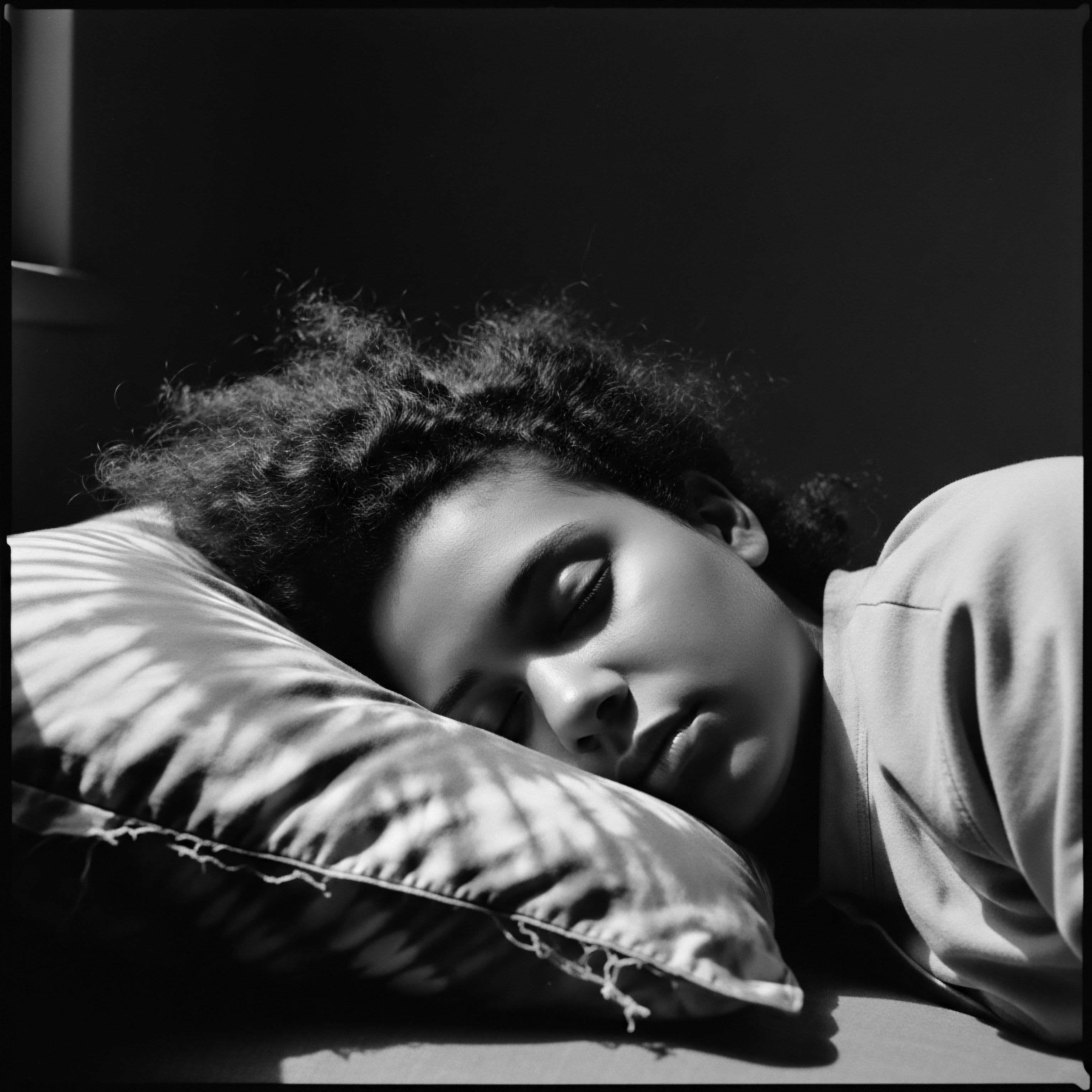
Ancestral Fortifications of the Scalp Barrier
Across the African diaspora, the wisdom of ancestral care rituals provides compelling evidence of a deep understanding of the skin barrier, even without modern scientific terminology. These practices were not accidental; they were responses to environmental conditions and hair physiology, passed down through generations.
- Protective Styling ❉ Headwraps, for instance, served not only as powerful symbols of identity, status, and resistance during periods of oppression but also as practical shields against the elements. By covering the hair and scalp, they minimized exposure to sun, dust, and wind, thereby preserving the scalp’s moisture balance and reducing damage to the hair cuticle. This practice directly supported the skin barrier’s integrity.
- Traditional Oils and Butters ❉ The widespread use of plant-based oils and butters, such as Shea Butter from West Africa or Argan Oil from North Africa, highlights a long-standing knowledge of emollients. These natural lipids, rich in fatty acids, would have augmented the scalp’s natural lipid matrix, bolstering its barrier function and preventing transepidermal water loss.
A particularly illuminating historical example can be found in the sustained use of Shea Butter (Vitellaria paradoxa) across West African communities. For millennia, women have harvested shea nuts and meticulously processed them into a rich, creamy butter. This tradition, often passed from mother to daughter, has served as a cornerstone of skin and hair care. Dr.
Y. A. A. (2018) notes in “The Role of Shea Butter in African Skin and Hair Care” that this butter, abundant in fatty acids and vitamins A and E, acts as a potent moisturizer and a protective agent against harsh environmental conditions, including intense sun exposure.
The regular application of shea butter to the scalp and hair, as observed in historical accounts and contemporary practices, effectively created an external lipid layer, compensating for the natural challenges of sebum distribution in textured hair and fortifying the scalp’s delicate barrier against moisture loss and environmental assault. This enduring practice underscores a deep, inherited understanding of how to maintain the scalp’s health, directly supporting the hair’s vitality.
| Aspect of Care Moisture Retention |
| Ancestral/Traditional Practices Regular oiling with natural butters (e.g. shea butter, cocoa butter) and plant oils (e.g. coconut, olive, argan). |
| Modern Scientific Understanding Emphasizes humectants (glycerin, honey) and occlusives (petroleum jelly, dimethicone) to reduce transepidermal water loss. |
| Aspect of Care Environmental Protection |
| Ancestral/Traditional Practices Use of headwraps and protective styles to shield hair and scalp from sun, dust, and wind. |
| Modern Scientific Understanding Formulations with UV filters and antioxidants to counteract damage from pollution and sun exposure. |
| Aspect of Care Scalp Health |
| Ancestral/Traditional Practices Herbal rinses, clay masks (e.g. Rhassoul clay), and scalp massages with infused oils. |
| Modern Scientific Understanding pH-balanced cleansers, targeted treatments for scalp microbiome, and gentle exfoliation. |
| Aspect of Care This table illustrates the enduring wisdom of ancestral methods, often validated by contemporary scientific principles, in preserving the scalp barrier's integrity for textured hair. |
The interplay between the physical structure of textured hair and the delicate balance of the scalp’s skin barrier is a constant dialogue. When the barrier is compromised, the scalp can become prone to dryness, flakiness, and sensitivity. This heightened vulnerability means that traditional hair care practices, which often involved gentle cleansing, consistent moisture application, and protective styling, were not merely aesthetic choices but deeply functional ones, ensuring the resilience and vitality of textured hair in its diverse forms.
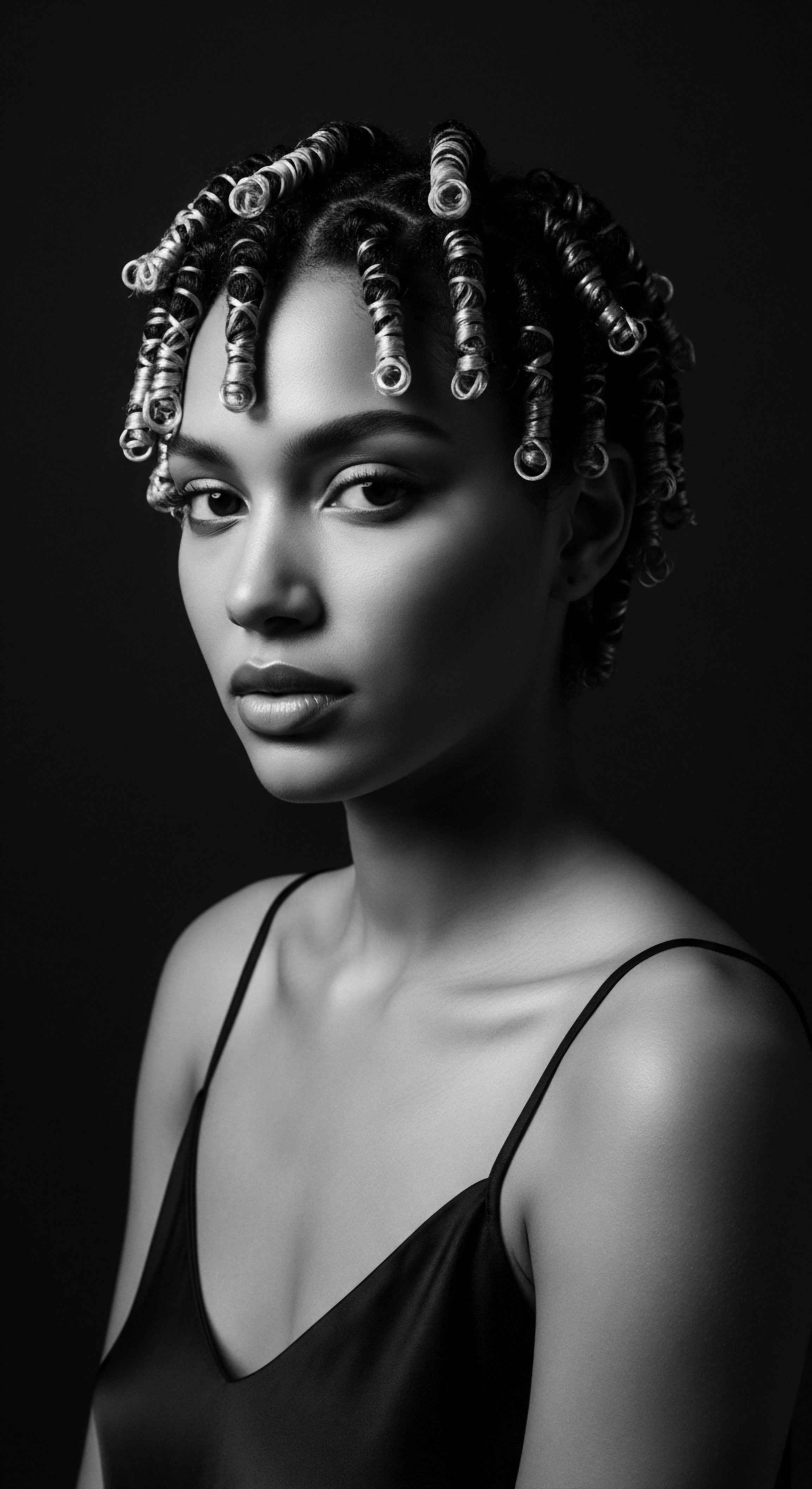
Academic
The academic definition of the skin barrier, specifically in the context of textured hair, transcends a mere biological description to encompass a complex interplay of genetic predispositions, environmental adaptations, and culturally inherited practices. It is a highly specialized biological interface, primarily constituted by the Stratum Corneum, the outermost layer of the epidermis. This stratum is a marvel of cellular organization, composed of terminally differentiated keratinocytes, or Corneocytes, embedded within a precisely orchestrated lipid matrix. This matrix comprises ceramides, cholesterol, and free fatty acids in specific molar ratios, collectively forming a lamellar bilayer structure.
This intricate arrangement is not merely a physical shield; it is a dynamic system responsible for maintaining epidermal homeostasis, regulating transepidermal water loss (TEWL), and providing an immunological defense against external pathogens and irritants. The integrity of this barrier is paramount for overall skin health, and by extension, for the health and optimal growth of hair, particularly for hair types that emerge from a scalp with unique physiological considerations.
For individuals with textured hair, a more nuanced understanding of the skin barrier’s function is essential. The inherent structural characteristics of coily and curly hair, such as its elliptical shape and the irregular distribution of hair follicles, influence the natural flow and even dispersal of Sebum, the scalp’s endogenous moisturizing agent. Studies indicate that due to these structural variations, sebum often struggles to traverse the entire length of a coily strand, leading to increased dryness along the hair shaft compared to straighter hair types.
This localized dryness can place a greater burden on the scalp’s skin barrier to maintain adequate hydration for both the scalp and the emerging hair. Consequently, disruptions to the scalp barrier in textured hair communities may manifest more acutely as flakiness, irritation, and heightened susceptibility to breakage, underscoring the intrinsic link between scalp health and hair resilience.
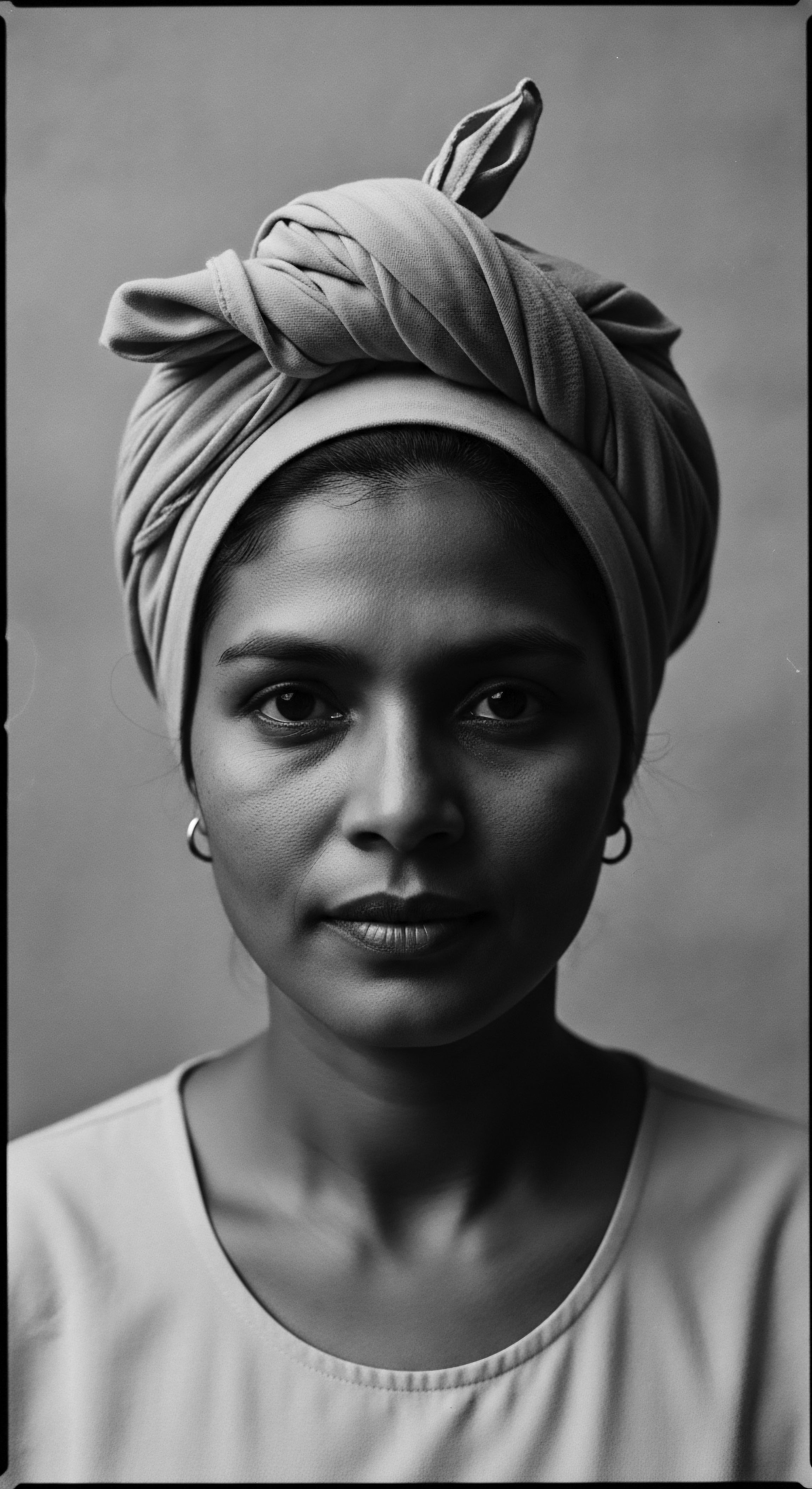
Physiological Peculiarities and Environmental Stressors
The physiological characteristics of skin across diverse ethnic populations present a compelling area of study when considering the skin barrier. While research on transepidermal water loss (TEWL) in Black skin compared to other skin types has yielded some contradictory results, some studies suggest that Black skin may exhibit lower TEWL values in certain areas, implying a potentially more robust barrier function, yet other findings propose higher TEWL. This variability may be attributed to differences in study methodologies, anatomical sites of measurement, or the complex interplay of genetic and environmental factors.
What remains consistently relevant is that variations in ceramide levels have been observed, with some research indicating lower ceramide content in Black skin compared to Asian and Caucasian skin. Given that ceramides are fundamental components of the lipid matrix, these findings underscore the importance of lipid-rich emollients in textured hair care, a practice deeply embedded in ancestral traditions.
Moreover, environmental stressors impose a significant burden on the skin barrier, irrespective of hair texture, but with amplified implications for textured hair. Air pollutants, such as particulate matter and polycyclic aromatic hydrocarbons (PAHs), can adhere to the hair surface and penetrate hair follicles, potentially altering hair growth and texture. Prolonged exposure can lead to scalp irritation, excessive sebum secretion, and even hair loss, a condition sometimes termed “sensitive scalp syndrome.” Dry winter winds and the reduced humidity of indoor heating further strip moisture from the hair and scalp, contributing to dryness and brittleness. The ancestral practice of head wrapping, as seen across various African cultures, served as a highly effective, albeit intuitively derived, protective measure against these environmental assaults.
These coverings, known by names like Gele in Yoruba culture or Duku in Ghana, were not merely adornments; they were functional garments that shielded the scalp and hair from direct sun exposure, dust, and wind, thereby aiding in the preservation of the skin barrier’s integrity and minimizing moisture loss. This highlights how traditional practices often offered practical solutions to physiological vulnerabilities, affirming an ancient understanding of holistic hair and scalp well-being.
One particularly insightful area of academic inquiry involves the ancestral use of occlusive and emollient agents in textured hair care. Consider the widespread, intergenerational application of natural butters and oils. For example, the Himba people of Namibia traditionally employ a mixture of clay and cow fat, known as Otjize, not only for its distinctive reddish hue but also as a protective coating for their skin and hair. This ancient practice, when viewed through a modern dermatological lens, effectively functions as a highly occlusive barrier, dramatically reducing transepidermal water loss and shielding the scalp and hair from the harsh arid climate.
This is a profound illustration of how empirical knowledge, passed down through generations, directly addresses the physiological needs of the skin barrier in challenging environments. The persistent use of such substances across diverse African communities—from shea butter in West Africa to argan oil in North Africa—underscores a collective, ancestral understanding of lipid supplementation as a means to fortify the skin’s protective mantle, even without the benefit of contemporary scientific nomenclature.
- Physiological Adaptation ❉ Textured hair’s unique structure influences sebum distribution, leading to a natural predisposition for dryness, placing a greater emphasis on the scalp’s barrier function.
- Environmental Resilience ❉ Historical practices like head wrapping provided a crucial physical barrier against harsh environmental elements, demonstrating an intuitive grasp of external protection.
- Biochemical Augmentation ❉ The ancestral use of lipid-rich plant materials like shea butter and argan oil functionally supplemented the scalp’s natural lipid barrier, affirming an early understanding of emollients.
The definition of the skin barrier, therefore, is not static; it is a dynamic concept, constantly informed by biological insights and enriched by the deep well of human experience, particularly the ancestral wisdom embedded within textured hair heritage. The continued exploration of these historical practices through a scientific lens offers a profound opportunity to refine our understanding of skin barrier health, providing a more holistic and culturally informed approach to care.
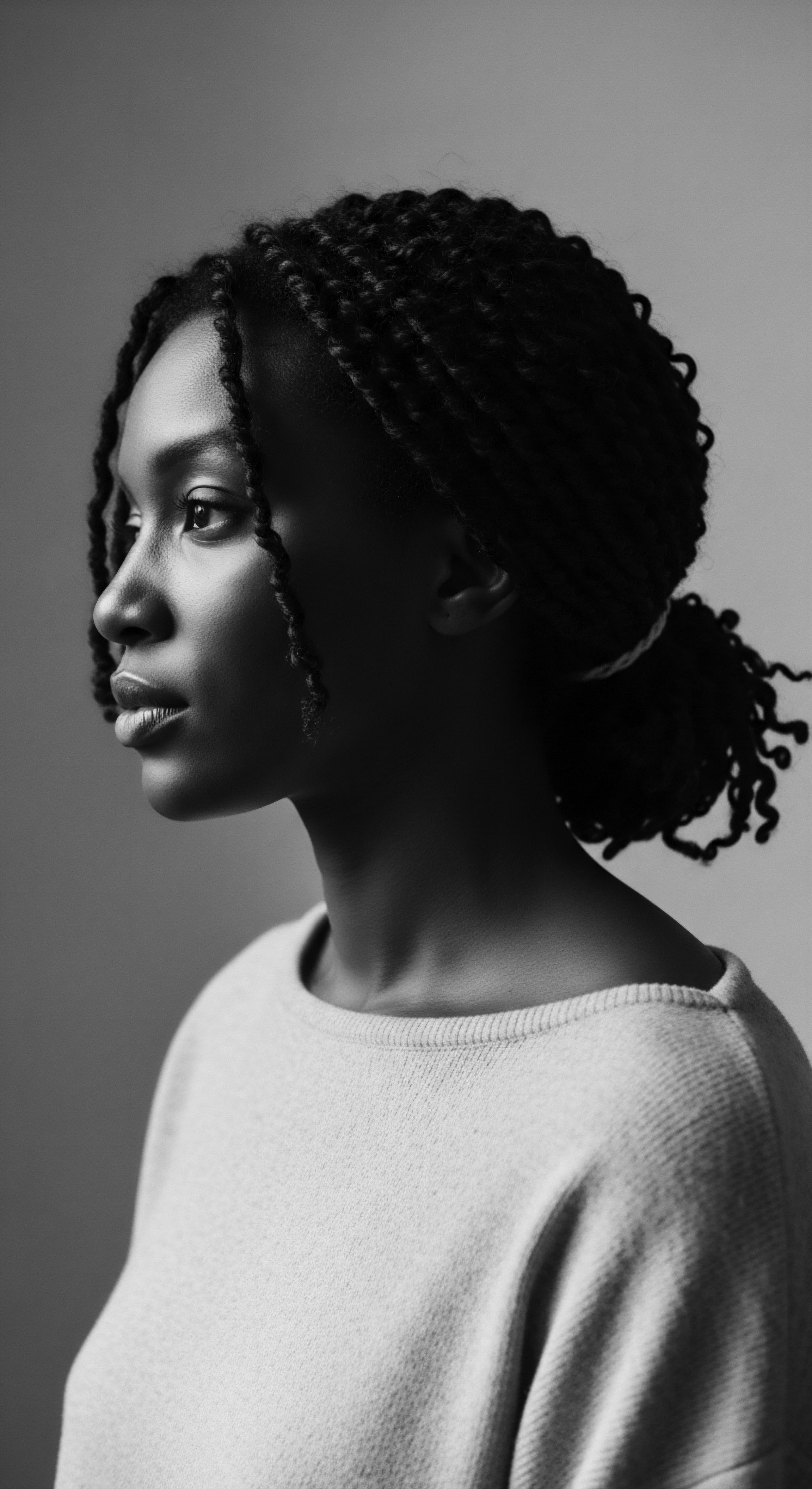
Reflection on the Heritage of Skin Barrier
As we close this contemplation of the skin barrier, its journey from elemental biology to a profound cultural touchstone for textured hair communities reveals itself as a truly remarkable testament to human resilience and ingenuity. The “Soul of a Strand” ethos, which guides Roothea’s understanding, teaches us that every coil, every curl, every wave carries within it not just genetic code, but echoes of ancestral wisdom, passed down through the hands that nurtured and adorned. The skin barrier, in this light, is far more than a biological construct; it is a living archive, a repository of generational knowledge.
Consider how the earliest acts of care for textured hair—the careful application of plant oils, the protective embrace of headwraps, the communal rituals of grooming—were, in essence, an intuitive dialogue with the skin barrier. Our foremothers, through their deep connection to the earth and their bodies, understood the need to fortify this protective layer against the elements, to seal in moisture, and to maintain the delicate balance of the scalp. This was not science as we know it today, but a profound, embodied science of survival and beauty, forged in the crucible of experience.
The resilience of textured hair, often thriving despite historical attempts to diminish or constrain its natural expression, is inextricably linked to the enduring strength of its underlying skin barrier. The wisdom of these traditions, often dismissed or overlooked in mainstream narratives, is now increasingly affirmed by modern scientific inquiry. This convergence of ancient practice and contemporary understanding offers a powerful pathway forward, allowing us to honor the past while shaping a more informed, respectful, and holistic future for textured hair care. It is a reminder that true beauty and wellness are not merely about external appearance, but about a deep, reverent connection to our roots, our heritage, and the intricate, miraculous mechanisms that sustain us.

References
- Byrd, A. D. & Tharps, L. D. (2001). Hair Story ❉ Untangling the Roots of Black Hair in America. St. Martin’s Press.
- Draelos, Z. D. (2010). Cosmetic Dermatology ❉ Products and Procedures. Wiley-Blackwell.
- Muizzuddin, N. et al. (2006). Ethnic skin types ❉ are there differences in skin structure and function?. Journal of Cosmetic Science, 28(2), 79–93.
- Robins, N. (2001). African American Hair ❉ A Cultural and Historical Exploration. Millbrook Press.
- Sugino, K. et al. (1998). The stratum corneum ceramides of human skin ❉ racial differences in content and composition. Journal of Dermatological Science, 18(2), 101-107.
- Taylor, S. C. (2002). Skin of color ❉ biology, structure, and function. Clinics in Dermatology, 20(1), 2-8.
- Wilson, D. Berardesca, E. & Maibach, H. I. (1988). In vitro transepidermal water loss ❉ differences between black and white human skin. British Journal of Dermatology, 119(5), 647-652.
- Y. A. A. (2018). The Role of Shea Butter in African Skin and Hair Care. Journal of Traditional African Medicine.
